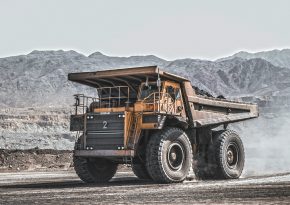13th September 2023 Potentially the biggest lithium deposit uncovered in McDermitt Caldera
Lithium global players
Lithium is one of the key elements which is at present applied in electric cars and green storage systems. It is expected that ca. of 88 mln tons exist in the world but only 25% of deposits are economically feasible to exploitation. The most important global players are Chile, Bolivia, and Australia where are the biggest deposits or where there are licenses.

Fig. 1. Type and relative size of global lithium resources in the world. (Source: Benson et al. 2023, SCIENCE ADVANCES)
1.5 trillion worth of discover
Lithium deposits are commonly found in hard rock (pegmatite, greisen veins, brines (usually high-elevation), volcanic sedimentary, and rarely in other forms.
Recent geologists have uncovered what is believed to be the largest lithium deposit in the former supervolcano at the border of Oregon – Nevada in U.S. Tom Benson, Matthew Coble, and John Dilles believe that the deposit contains 20 up to 40 mln tones of lithium is much more than deposits in Bolivia’s Uyuni Salt Flat. According to the Chemisty World, an analysis suggests that McDermitt caldera contains high lithium grades up to ca. of 1.0% (wt.) in smectite-rich claystone and in-situ tests revealed lithium content in volcanic crater form ca. of 1.3 to 2.4 % (wt.).
Formation
McDermitt caldera is estimated to have been formed around 19 million years ago. Its last eruption was between 15-17 mln years ago which was associated with Yellowstone plume volcanism. It is believed that volcanic eruption had pushed minerals forward from the ground to the surface. After the eruption, the caldera was filled with alkaline magma rich in sodium and potassium. Furthermore, lithium, chlorine, and boron were also presented. Products of the eruption had cooled and formed finely crystalline glassy volcanic rock. The rock weathered and produced lithium-rich particles. Further, the caldera was filled with water that formed a lake. With time whitehead volcanic products and surrounding material formed sediments rich in clay at its bottom. When the lake evaporated another volcanic event exposed sediments to a hot alkaline brine.

Fig. 2. Lithium mineralization in McDermitt caldera. (Source: Benson et al. 2023, SCIENCE ADVANCES)
Lithium mining
Lithium exploitation can be divided into two main methods: exploitation of lithium ore from Earth, and brine recovery. Mining lithium ore from Earth requires heating rocks using fossil fuels. The brine method requires high costs, is labor intensive, and relies on pumping out underground aquifers. By this, it can be concluded that lithium exploitation is followed by the production of harmful byproducts. However, Benson indicates that lithium-bearing sediments are right off the surface which ‘makes the deposit one of the least impactful mines ever to be built’.
Potential and challenges
Tom Benson says that his company Lithium Americas Corp. expects to begin exploitation in 2026 for the next 40 years. Tom Benson aims to mine a ca. of 40000 tones annually in the first phase of the project. However, the plan has been criticized due to the low social acceptance and claims that the deposit lies on top of the sacred land of Native Americans.
The deposit itself is a right now a tremendous chance for the electric vehicle industry. CNBC reported that General Motors Motor announced in 2023 that it had invested 650 mln $ in American Lithium Corp. for “exclusive access to the first phase of lithium production and the right of first offer on the second phase of lithium production that will come out of the Thacker’s Pass mine in Nevada”.
Furthermore discovering this deposit can change dominance in the global lithium market.
World Mining Congress
2026The 27th World Mining Congress will be organized in 2026 in Peru. Detailed information can be found either on the 27th WMC official webpage or the second circular.
IOC / WMC Meeting
2025The 106th IOC/WMC meeting will be organized on September 18th 2025 in Jakarta, Indonesia.









